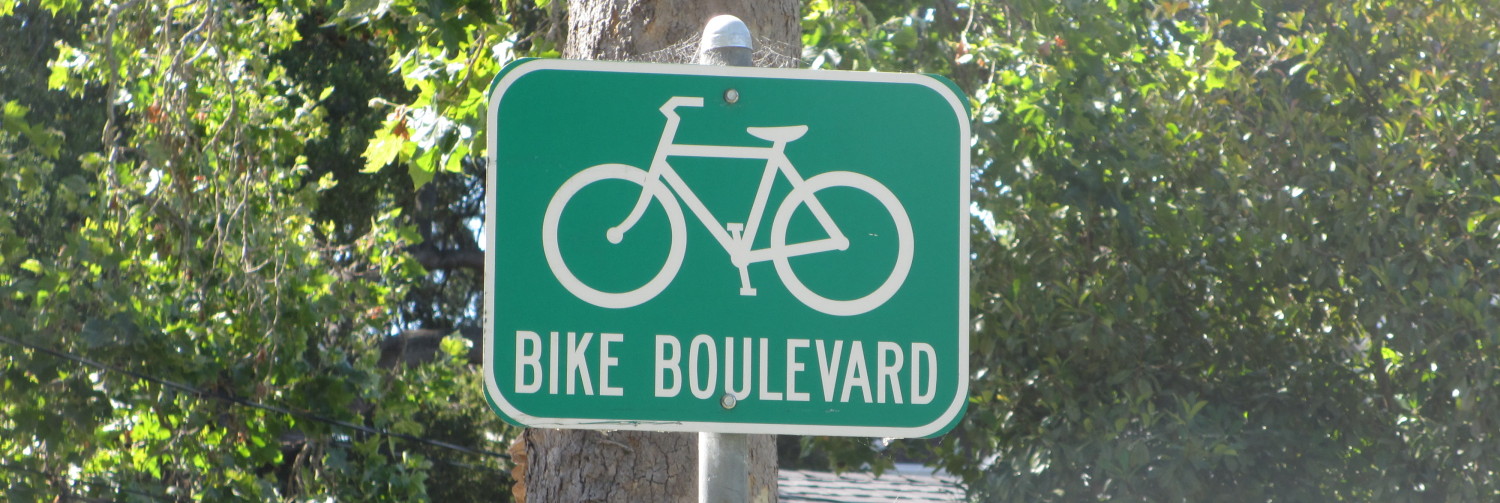The photo above is taken a few weeks ago, looking south along Cambridge. Primrose is behind us, Somerset and the new Chinatown Royal Arch is directly ahead. The street looks closed to automobiles, which is the idea. It was reconstructed years ago using the Dutch design principles called a woonerf.
Getting closer to the woonerf, it is less constricted than it first appeared. There is, indeed, plenty of room for a car … or truck, or school bus, or fire truck … to get through. The high shrubs and planters deliberately block the view and sight lines, forcing motorists to slow down. It is the antithesis of conventional North American road planning, which calls for fixed borders, lots of signs, and very wide road surfaces and sight lines. Woonerfs and other new forms of indistinct roads seem to be gaining ground, with the “widen open road” planning mentality reeling from research that shows what any resident always knew: wider roads, brighter lights look like highways/freeways and encourage motorists to travel too fast. The very measures that made freeways and highways safer make local streets more dangerous.
See for example, Confessions of a Recovering Engineer: http://www.grist.org/article/2010-11-22-confessions-of-a-recovering-engineer
Notice the textured asphalt pavement in a stamped brick pattern; it has held up amazingly well for something done about 20 years ago. Note too, that the sidewalk disappeared, being paved at the same level as the road, with the same textures, with planters or bollards to give clues to motorists that they are invading pedestrian space.
Children and cats wander around on this “street”, as an extension of their driveways and yards. It looks and feels unlike any ordinary street.
There! according to the photo below, we have made through the woonerf and can see the Yangtze restaurant ahead, and the narrow end of the Arch on the left.
On one of the pictures above, there is a smudge of blue paint on one of the high curbs. It might be from a car. It is not possible for me to know if this was from a careless speeder cutting through the woonerf, or someone more innocent backing out of a laneway. But I do firmly believe that the threat of physical damage causes motorists to behave. Without that fear, they run red lights when they know it is primarily a pedestrian activated crossing; they avoid cyclists with a flash flag not because they see the cyclist but because they fear scratching their paint job with the flag pole that comes close to them.
Making roads wider, smoother, flatter, highly signed, brighter lit, with open sight lines, merely makes the risk of physical damage to themselves lower, so motorists drive faster.
Cambridge Street between Primrose and Somerset is the only well-developed woonerf I know of in Ottawa. Are you aware of others?
Back in the 1980’s, a number of courtyard townhouse developments, such as those on LeBreton Flats south of Albert, were built with woonerf ideas in mind. Unfortunately, the ones on the Flats cut fancy paving and planters out of their budgets, with the result that most of the “shared space” courtyards were simply perceived as asphalt driveways and Walmart-parking-lots-in-training. To be successful, a woonerf must change the motorists perception from “road ahead, speed up” to “where am I going, look carefully”.
A new much larger woonerf proposal was floated to a group of neighborhood activists, business people, and academics last week. Read about it in the next post.
_________________________________
In the photo below there are some curvy street segments that might get richly planted. I was standing on a centre median to take the picture, a median armoured with heavy steel bollards filled with concrete. This woonerf may calm traffic but I suspect its primary purpose is to prevent terrorists militants left wing pinkos and cyclists someone from launching vehicular bombs at the American Embassy immediately behind the photographer.










That’s verynteresting – I’ve been through there on foot many times, and I always just assumed it was impassable by cars!
Cambridge is one of my favourite streets to walk down with the dogs, mostly because of the unusual layout. Now I know the word for it – woonerf. Neat.
As a recent import to Ottawa (Sep 2009), living in the Preston/Somerset area, one of my favourite things about the city how easily I can reach a lot of great neighbourhoods on foot. Happy to hear that we might see more streets like this.
I just drove through that woonerf for the first time a few weeks ago, and while I’ve loved the idea since I’d seen similar concepts at work in the Netherlands, I don’t like the ugly execution of it.
The idea of woonerven (the plural – meaning “living yards”) grew out of the protests in Delft in the 60’s where angry residents pulled old couches and furniture into the street to force cars to weave thorough slowly. A more formal version evolved. But the idea was not to simulate a road closure, but simply to blur the line between front yards and the street. (decent article here: http://www.students.bucknell.edu/projects/trafficcalming/History/Int'l.html)
The Dutch are also far ahead of us on speed bumps. One of my favourite words in Dutch is “drempel” – which means “threshold” – as in the ledge on a doorway – as well as a speed bump. Again, the metaphor is of seeing the road as part of shared living space rather than as the exclusive domain of cars. And my Dutch relatives can recite a whole taxonomy of drempel types for different traffic situations.
Very interesting. I wonder if a way to Canadianize the idea would be to create a street hockey arena in the middle of the block where kids are actually encouraged to play street hockey on the woonerf.